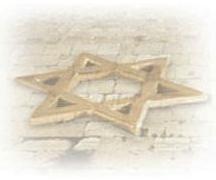There are various methods available for performing a circumcision procedure.
Below we will give a brief description of some of the methods.
Rabbi Boruch Mozes employs the traditional method to perform the circumcision procedure, using a shield which may also be called a guard.
This method is arguably the fastest way to perform the circumcision procedure, as well as the most gentle for the child.
In certain instances due to the various physical characteristics, the mohel must use other surgical methods to perform the circumcision.
Traditional Circumcision Using a Shield
The adhesions between the glans and foreskin are separated using a probe. The foreskin is pulled away from the glans. This process is often done with a hemostat.
The Mohel will then slide the shield above the glans allowing the foreskin to enter the groove in the shield. The shield acts as a barrier between the glans and the foreskin being cut. The Mohel will then cut the foreskin, against the shield using a cutting instrument such as a knife, scalpel, or razor.
The procedure culminates with the Mohel applying a bandage to the wound. The entire process, depending on the Mohel, takes from one or two minutes and in some cases more.
Gomco Clamp
(source: Wikipedia)
The foreskin is separated from the glans. To do this, a dorsal slit is frequently employed. The bell of the Gomco clamp is placed over the glans and the foreskin is pulled over the bell. The base of the Gomco clamp is placed over the bell and the Gomco clamps arm is fitted.
After the surgeon confirms correct fitting and placement (and the amount of foreskin to be excised) the nut of the Gomco clamp is tightened easing the clamping of nerves and blood flow to the foreskin. The Gomco clamp is left in place for about five minutes to allow clotting to occur, then the foreskin is severed using a scalpel.
The Gomco's base and bell are then removed, allowing for bandaging of the penis.
Plastibell
(source: Wikipedia)
The adhesions between glans and foreskin are divided with a probe. Then the foreskin is cut longitudinally to allow it to be retracted and the glans to be exposed.
The Plastibell comes in six sizes. The appropriate one is chosen and applied to the head of the glans. The ring is then covered over by the foreskin. A ligature is tied firmly around the foreskin, crushing the skin against the groove in the Plastibell.
Then the excess skin beyond the ring is trimmed off. Finally, the handle is broken at the end of the procedure. The entire procedure takes between five to ten minutes depending upon the experience and skill of the surgeon. The ring falls off in three to seven days leaving a circumferential wound that will heal over the following week.
Mogen Clamp
(Warning: Contains graphic images. Source: http://www.circumcisionquotes.com/rdr5.html)
The adhesion between glans and foreskin are divided. (See "source" for in depth description of this process.)
A hemostat is placed on the dorsal midline with its tip about 3mm short of the corona and locked into place. The Mogen clamp is opened fully. A key step in Mogen circumcision is the safe placement of the clamp. To push the glans out of the way, the surgeon's thumb and index finger pinch the foreskin below the dorsal hemostat.
The Mogen clamp is then slid across the foreskin from dorsal to ventral following along the same angle as the corona. The hollow side of the clamp faces the glans. Before locking the clamp shut, the glans is manipulated to be sure it is free of the clamps jaw. If it is, the clamp is locked, once locked the foreskin is excised flush with the flat surface of the clamp with a 10" blade scalpel.
The clamp is left on for a few moments to insure hemotosis then unlocked and removed. The crush line covers the glans line fully with penile shaft skin. The glans is liberated by thumb-traction at the 3 and 4 o'clock positions that pull the crush line apart.
NOTE: See above sources for appropriate methods of anesthetic.
Adult Circumcision
There are various surgical methods that may be employed for performing adult circumcision. The following method may be used for adults and for children. Please see “source” for information about anesthetic and post-operative care.
Dorsal slit circumcision
(Warning: Contains graphic images. Source: www.emedicine.com)
To perform the dorsal slit circumcision, clamp the foreskin at the 12-o'clock position with 2 straight hemostats to limit bleeding. Sharply incise the tissues between the 2 clamps perpendicular to the corona. Make the proximal circumscribing incision. Excise the foreskin at its base (approximately 1 cm proximal to the coronal sulcus) with scissors to produce a cosmetically attractive circumcised penis. The amount of skin left below the coronal sulcus should be no more than 1 cm long to prevent edema, adhesions, and, occasionally, paraphimosis. Ligate superficial veins and obtain hemostasis with electrocautery.
Circumferentially approximate the proximal and distal edges of the foreskin with 4.0-5.0 absorbable sutures (children) or 3.0-4.0 absorbable sutures (adults) in an interrupted fashion. During the circumcision, the use of a thin tapered (noncutting) needle is recommended because it is less traumatic to the tissues and causes less bleeding.
Bacitracin ointment is used to lubricate the suture material (eg, chromic) to facilitate passage of the suture through the delicate skin tissues. This is especially helpful in the pediatric population. Alternatively, mineral oil may be used as a lubricant.
Disclaimer: Surgery is for professionals only. This information is being provided for informational purposes only. This should not be used or relied upon by anyone including professionals. We do not assume responsibility or liability for the accuracy, truth or relevancy of this information. See Disclaimer...







